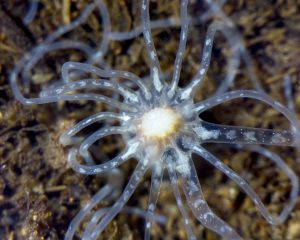
The Strange Case of Cholesterol Synthesis During the Evolution of Animals
A new study published recently in the journal Current Biology suggested that during the course of evolution, most animal species on Earth lost the ability to synthesize
 A collaborative study by Drs. Tamar Lotan and Shani Levy (Leon H. Charney School of Marine Sciences) and Dr. Mickey Kosloff (Department of Human Biology) has discovered surprising evolutionary similarities in the functioning of the human nervous system and that of the sea anemone. The research found that the neurotransmitter GABA, which regulates the preliminary development of the nervous system in mammals and particularly in humans, follows a similar regulatory process by a receptor from the family in the sea anemone Nematostella GABABR vectensis. This unexpected relationship not only opens new avenues for basic research in neuronal development and evolution, it also offers new possibilities for pharmacological research aimed at finding new drugs for human ailments such as depression and anxiety. Nature Ecology and Evolution, the premiere journal in ecology, evolution, and related fields, published the paper describing these findings: >>READ OFFICIAL PRESS RELEASE
A collaborative study by Drs. Tamar Lotan and Shani Levy (Leon H. Charney School of Marine Sciences) and Dr. Mickey Kosloff (Department of Human Biology) has discovered surprising evolutionary similarities in the functioning of the human nervous system and that of the sea anemone. The research found that the neurotransmitter GABA, which regulates the preliminary development of the nervous system in mammals and particularly in humans, follows a similar regulatory process by a receptor from the family in the sea anemone Nematostella GABABR vectensis. This unexpected relationship not only opens new avenues for basic research in neuronal development and evolution, it also offers new possibilities for pharmacological research aimed at finding new drugs for human ailments such as depression and anxiety. Nature Ecology and Evolution, the premiere journal in ecology, evolution, and related fields, published the paper describing these findings: >>READ OFFICIAL PRESS RELEASE
Sea anemone are soft-bodied marine animals that resemble flowers.

A new study published recently in the journal Current Biology suggested that during the course of evolution, most animal species on Earth lost the ability to synthesize

A unique study has for the first time documented the common process of a sequential feather replacement (feather molting) found among modern birds in a

A new study has found that the interferon beta (IFN-ẞ) protein plays an important role in limiting the immune system’s role in inflammation and preventing
© University of Haifa Division of External Relations